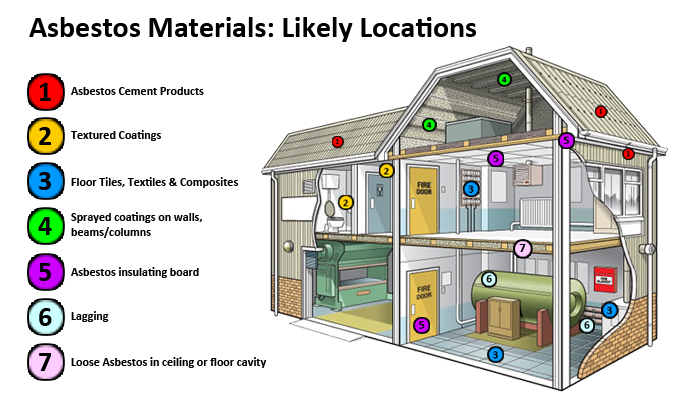How to Spot Asbestos in your Home
Was your home built before the late 1980s? If so, then chances are asbestos exists throughout your house. Fortunately, if your home was built after this period asbestos is less likely. However, it is important to be cautious, as building materials may have been recycled, therefore there are still chances that asbestos materials are present within newer builds. Asbestos has not been used in building materials for domestic use since the 1980s, yet the ban for all products containing the mineral was only brought into Australia at the end of 2003. With its hazardous nature and wide use, we explore why it is important to know how to spot asbestos and what to do once it has been discovered.
What is Asbestos?
Asbestos is a unique mineral that is soft to touch but incredibly strong. This mineral is separable into millions of fine fibres and is found in rocks. Asbestos was added to many construction materials before the 1980s and caused harmful effects on those who were exposed to dangerous amounts of its fibres. Three main types of Asbestos were used, with blue asbestos being the most harmful due to its long, thin fibres that reached the lungs easily.
Why was Asbestos used?
A well-known beneficial property of asbestos is it incombustibility which led to its extensive use in construction materials for insulation and fire proofing. Asbestos was also used for its acoustic properties, strength and resistance to harsh weather conditions or chemicals. The mineral was relatively easy and cheap to extract and produce, allowing it to be obtainable in large quantities. Before the health impacts were known about using asbestos, the mineral was used all across Australia and the world. Despite the ban, Asbestos is still being removed today and it is believed that it will continue to be for decades.
Where is Asbestos found?
Asbestos may be common but it is also hard to identify. It may be surprising to some that asbestos features in many more products than we think.
Common materials Asbestos is found in include:
Asbestos cement
Cement pipes and tiles
Cement sheeting in walls
Underlay carpet
Floor and ceiling tiles
Attic and wall insulation
Corrugated walls and roofs
Fences, garages and carports
Uncommon materials Asbestos is found in include:
Lino Tiles (common in 50s and 60s)
Roof sheeting & guttering
Lining under eaves (if built between 50s – 80s)
Vermiculite ceilings – also known as stucco ceiling, popcorn ceiling or stippled ceiling
Laundries, WCs
Hot water pipes in masonry walls
This diagram by Horsham excavations is another helpful way to identify where asbestos could be located in your home:
What does Asbestos look like?
Asbestos can be difficult to identify as it differs in which material it is used in. For a fantastic list of examples explore asbestos testings pictures which range from ceiling to floor plus air conditioning units and insulation. Another resource is provided by Asbestos Victoria where you can explore different rooms and images to help you identify where asbestos may be located and examples of what asbestos looks like.
Why do I need to know if I have Asbestos in my home?
It is vital to be aware of the materials, rooms and products in which asbestos could be present in your home. When asbestos is disturbed, either through renovation or repair, the fibres become airborne, and this is when asbestos is hazardous. Therefore, if you are planning any type of renovation or change to your home you need to know if asbestos is present to ensure you do not risk filling the air with the dangerous fibres. If you do discover asbestos in your home consider where you found it, and what condition the material is. Whether it is easily crushed and reduced to power which can lead to airborne fibres, or if it is tightly compacted unless cut through. Sometimes asbestos containing materials can be repaired, yet this is usually temporary and it is recommended to have any materials that are damaged to be professionally removed.
It is also important to understand the presence of asbestos when you are looking to purchase. Ensure you inspect the property with a professional to identify any source of asbestos before signing the contract. Do your research and ask if the laundry, roof, garage or walls are known to contain asbestos.
How to spot Asbestos
To spot asbestos, first conduct a thorough inspection of the property, both inside and outside exploring every space and cavity. Professional services such as a building inspection can include an asbestos examination but ensure you check with the inspector. At Bayside House Inspections, all our building inspections include asbestos checks. If asbestos is thought to be discovered the next steps involve testing. At Bayside House Inspections, we can help you with these steps in ensuring your safety and awareness when living with asbestos.
For more information about booking a Building inspection see our pricing page.


